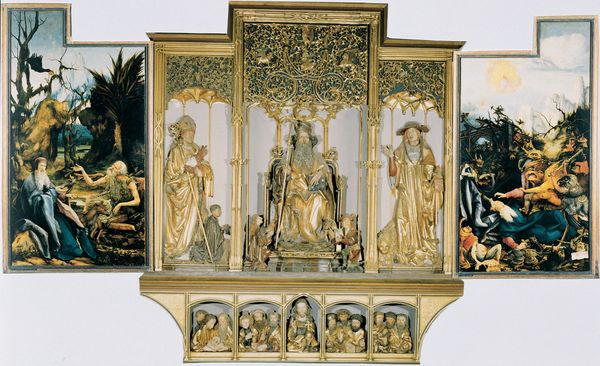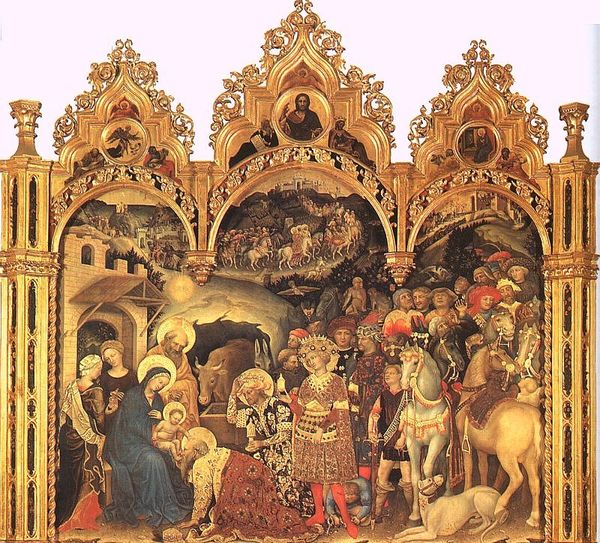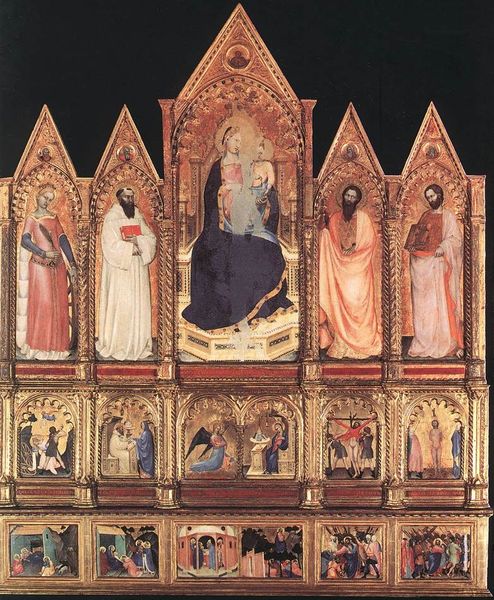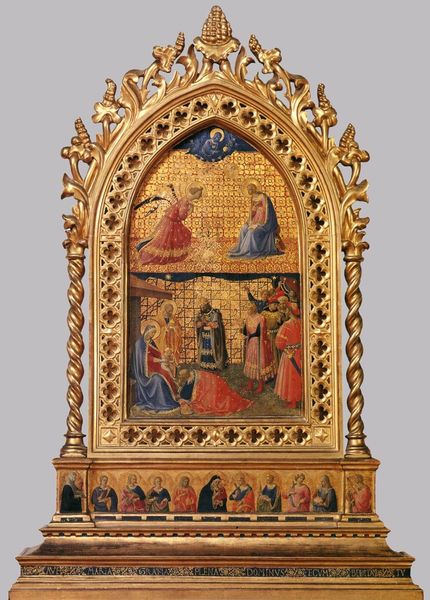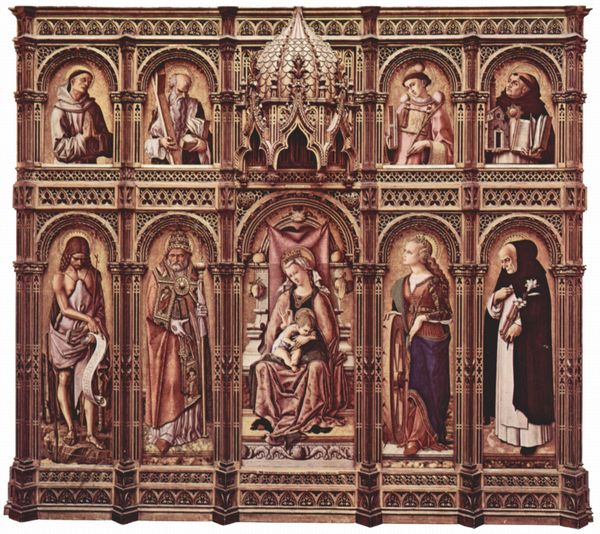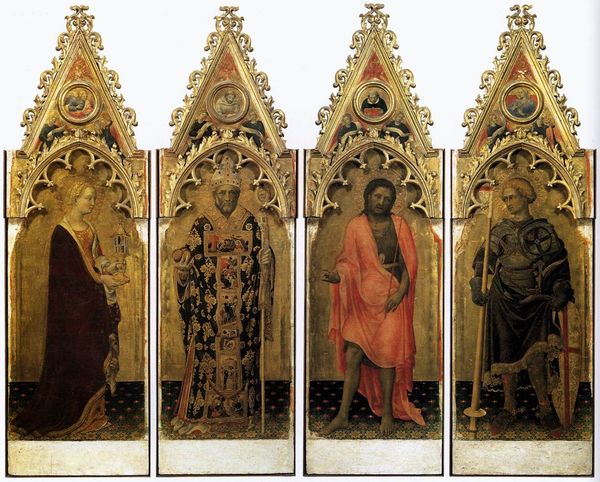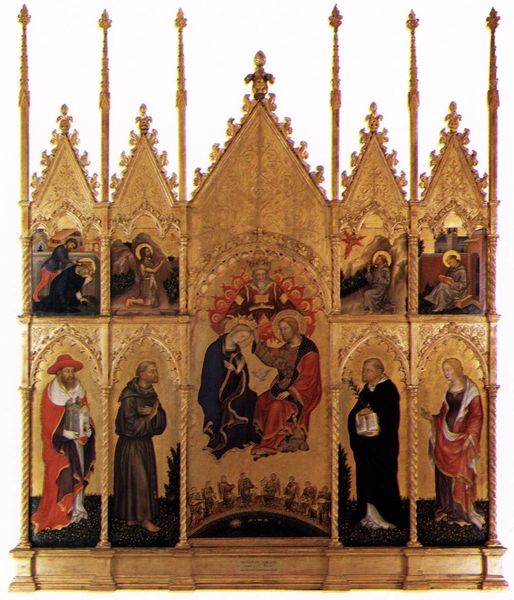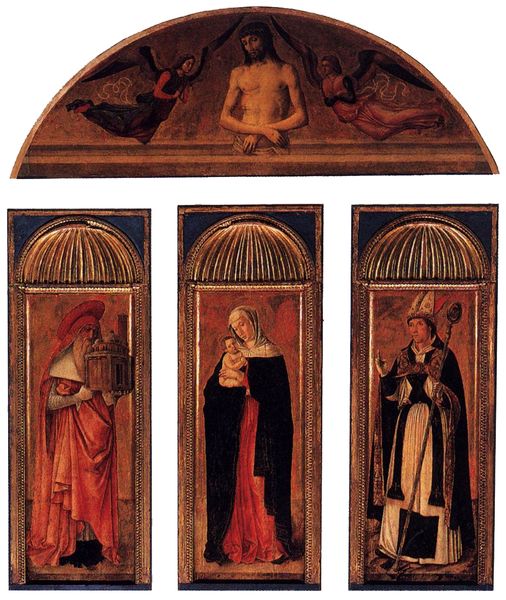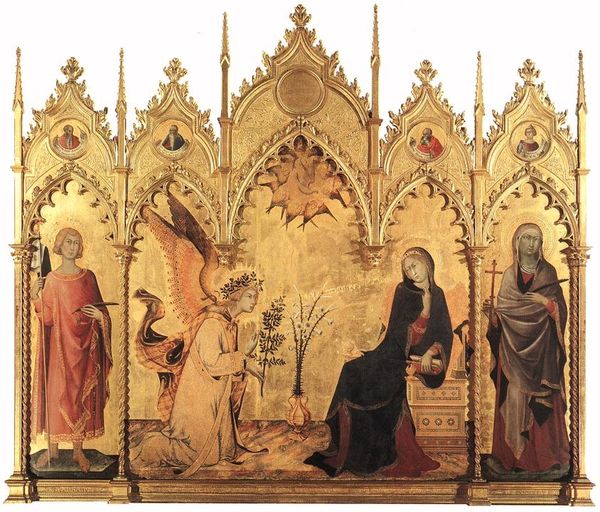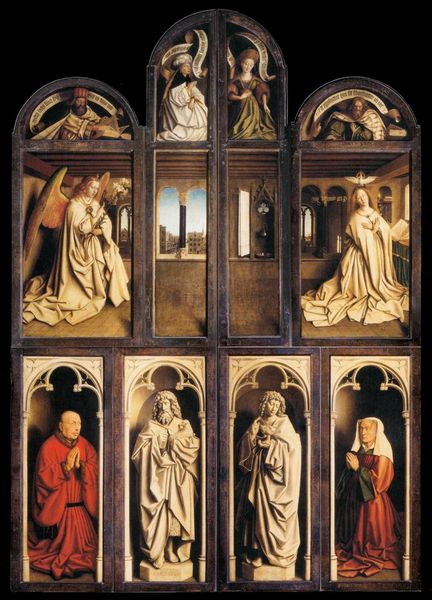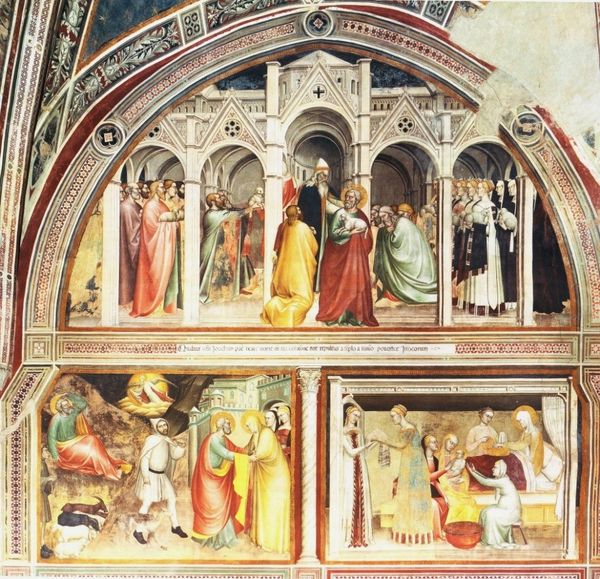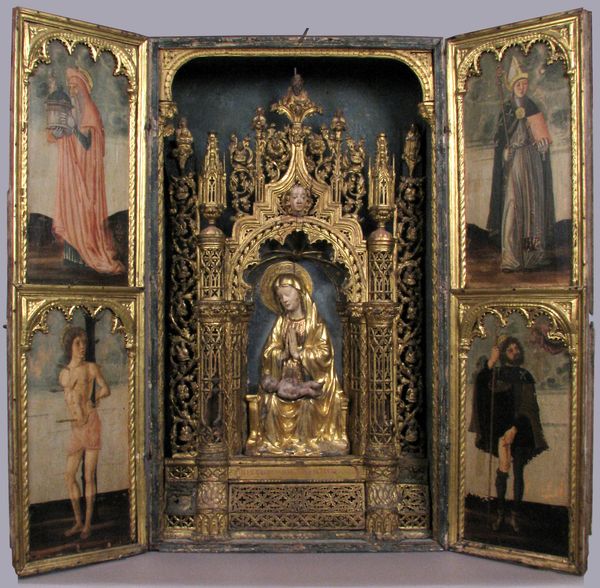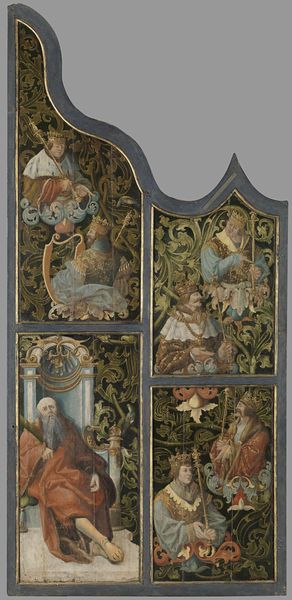
tempera, painting, textile, sculpture, wood
#
portrait
#
tempera
#
painting
#
sculpture
#
textile
#
holy-places
#
figuration
#
11_renaissance
#
sculpture
#
christianity
#
men
#
wood
#
history-painting
#
northern-renaissance
#
christ
Copyright: Public domain
Editor: This is the third view of the Isenheim Altarpiece by Matthias Grünewald, completed around 1515. It's a large, multi-paneled piece, and what strikes me most is the contrast between the vibrant gold sculptures in the center and the unsettling scenes on the side panels. What is your interpretation of the juxtaposition in this work? Curator: The Altarpiece functions as a powerful commentary on suffering, salvation, and the role of the church in times of crisis. Think about the historical context: this was created for a hospital order dedicated to treating patients with skin diseases, likely including those afflicted by ergotism, also known as Saint Anthony’s Fire. Editor: Right, I remember reading that. So, the suffering Christ and the saints… Curator: Exactly! They become figures of solidarity. Grünewald isn't just depicting religious scenes, he’s engaging with the very real pain and societal anxieties of his time. Consider how the plague and other diseases disproportionately impacted marginalized communities. Do you see how the figures within offer a divine mirroring of earthly suffering? Editor: That's fascinating. So it's not just about religious devotion, but also about social commentary? The side panels become even more poignant when seen in this light. Curator: Precisely! Art serves as a mirror reflecting society’s anxieties, but it can also be a call for social justice. The opulence of the central sculptures could even be seen as a critique of the Church’s wealth amidst such widespread suffering. Editor: That’s a really interesting perspective; I hadn’t considered the implicit social criticism. The Isenheim Altarpiece feels far more complex now, resonating beyond its religious function. Curator: Indeed. Viewing art as embedded in socio-historical forces gives us the tools to interpret its rich and complex narratives.
Comments
No comments
Be the first to comment and join the conversation on the ultimate creative platform.
